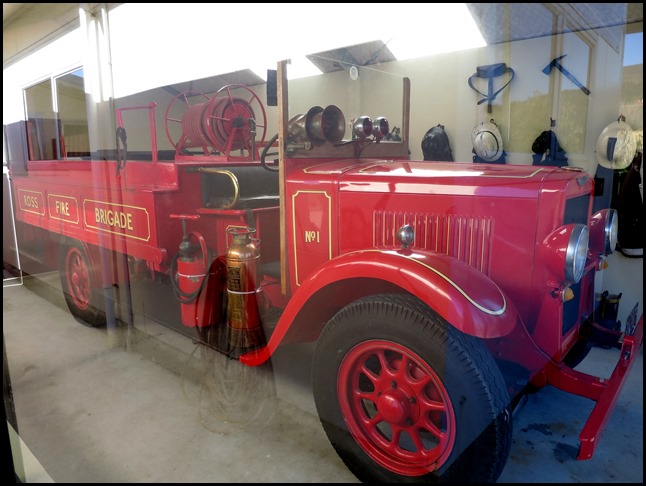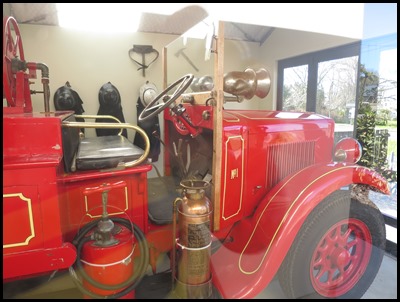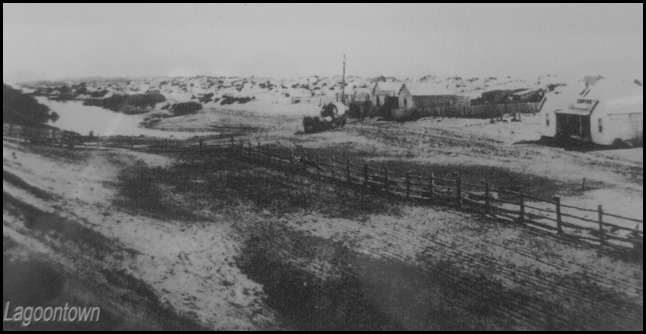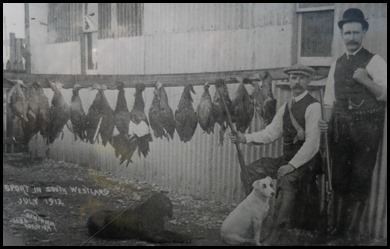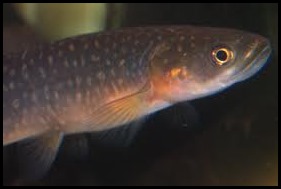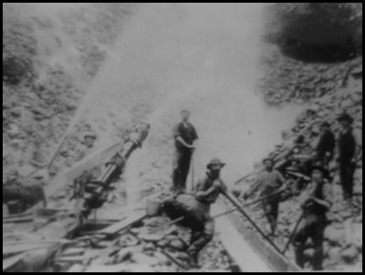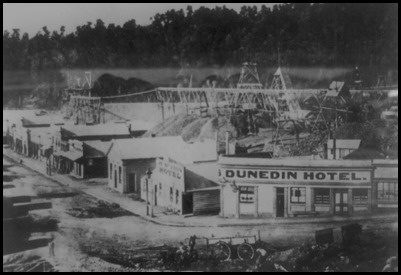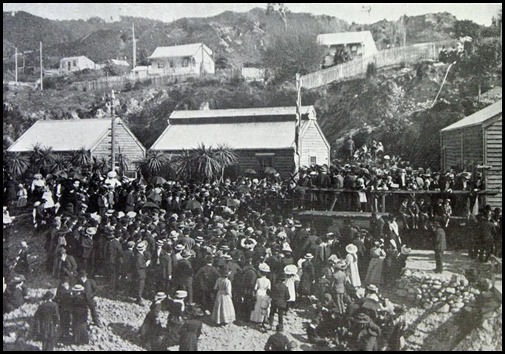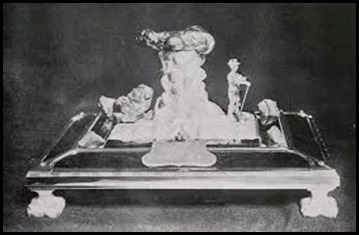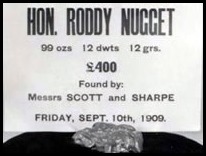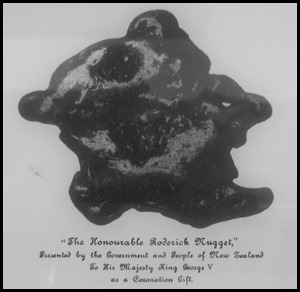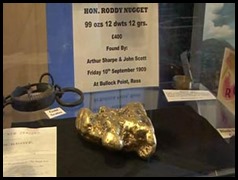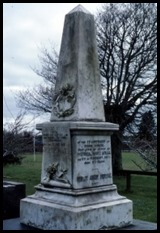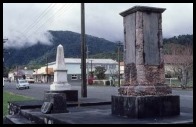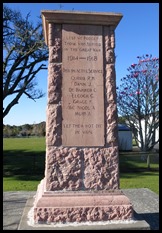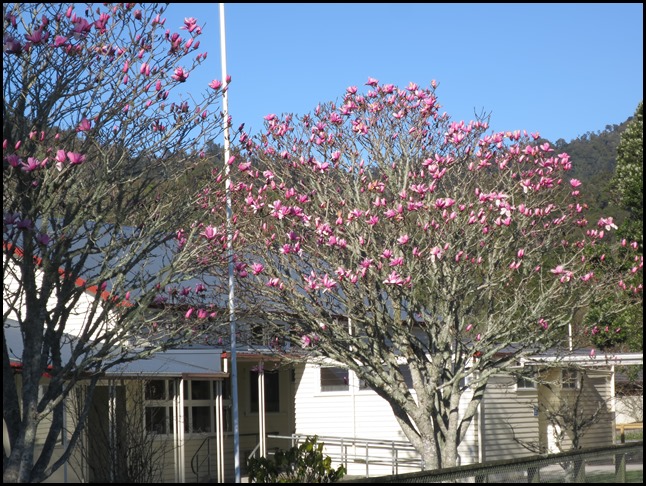Ross

|
A Pit Stop in Ross 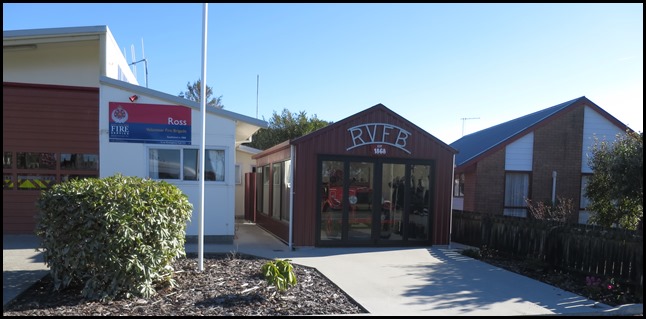 Desperate for fuel, we made a stop in what looked like a tiny town. For the meanwhile ‘no name’, on first glance, was a main street and a few side roads with houses. Toward the end of the main street we could see the small petrol station, en route we saw the Fire Station, the little building to its right caught our eye. Fill Mabel and come back for a closer look.
A Grand Old Lady and now we know we are in Ross, information boards opposite.
A small historic town, 31 km south-west of Hokitika. Ross was the centre of one of New Zealand’s richest alluvial goldfields in the late 19th century, with extensive underground mining and sluicing claims. The town sprang up after discoveries in 1864–65. Surface gravels were rapidly worked out, but gold was found beneath Ross flat. Companies were formed to develop underground mines. Although profitable, underground mining had ceased by 1915, defeated by drainage problems. A large opencast pit was opened in the 1990’s to recover gold from previously inaccessible areas, and is now filled by a lake at the southern end of the township.
Adventurer Richard Sherrin noted the remains of a Māori settlement alongside the lagoon when he journeyed through the area in 1863. After the discovery of the Ross goldfield, a small European settlement named Lagoontown grew up at the northern end of the Totara Lagoon. At Lagoontown diggers could stop for refreshments or catch a boat along the lagoon to the goldfield.
The abundant wild fowl and fish that inhabited the brackish waterways around Totara Lagoon provided a good source of food for Māori travellers as they trekked between Ōkārito and the settlements further to the north. The Māori name for the lagoon is Paieri which means noose or snare. Today Totara Lagoon is inhabited by a wide variety of birds, mostly waterfowl but also waders and marsh birds, encompassing twenty nine species in all. They include shags, herons, swans, ducks, stilts, oyster catchers, gulls, terns, kingfishers, fernbirds, harriers, pukekos and bitterns. The lagoon, as in days gone by, is popular for duck shooting – the picture above was taken in 1912, also canoeing, walking and whitebaiting.
The narrow tributaries of the lagoon and the lagoon itself provide a good habitat for fish life including trout, giant and banded kokopu, ianga, eels, bullies and fresh water crayfish. The giant kokopu is the biggest species of adult whitebait. It is a threatened species and is a solitary, secretive fish that is rarely seen.
The Ross goldfield which was first discovered in 1864/65, became famous as the richest source of alluvial gold in New Zealand. A settlement quickly sprang up at Jones Creek but was soon superseded by a properly marked out township on one of the lower terraces. The new town was originally called Georgetown but was soon changed to Rosstown and around 1866 the name was shortened to Ross. It is named after the Provincial Treasurer of the Canterbury Province, George Ross.
Between 1865 and 1870 it is said there were around three thousand five hundred diggers working the goldfields around Ross. However during the early 1900’s gold production tapered off and by 1917 much of the mining activity had ceased. In 1988 Ross became a gold town once again with the opening up of a new mining operation in the old alluvial terraces around the township.
The crowd at the official opening of the Ross goldfields by the Hon James McGowan in 1909.
The largest
gold nugget found in New Zealand was unearthed on the Ross goldfield by John
Scott and Arthur Sharpe in 1909, it was the size of a mans fist. It was known as
the Honourable Roddy Nugget, after the Minister of
Mines the Honourable Roderick McKenzie. Two local men, Louis Pedrazzi and James
Free, purchased the nugget for four hundred pounds. They later sold it for four
hundred and fifty pounds – just over thirty thousand pounds in todays money, to
the Totara Hospital Committee at Ross who raffled the nugget in 1910, raising
between five and six hundred pounds.
The nugget was later purchased by the New Zealand Government and in
1911 the ‘Honourable Roddy’ was bought by the
government. Mounted in a ‘fitting setting’, it became New Zealand’s ‘decidedly
handsome’ Coronation gift to King George V. When enquiries were made 40 years
later, it was discovered that the nugget had been melted down to make a royal
tea service. In September 2011 gold was selling for about a thousand
pounds an ounce, so the Honourable Roddy would be worth close to one hundred
thousand pounds today.
The Otago Witness. 22nd of September 1909:- Hokitika: “A nugget of gold, valued at four hundred and fifty pounds, was found a few days ago in Ross Borough, within a chain of the Ross Goldfields claim. Two men (Sharp and Scott) were working a small piece of abandoned ground near Donnelly's Creek, where they picked up a couple of small nuggets.They were encouraged to continue operations, when they came on a large lump, which is about the size of a white stone turnip, containing a little quartz. The Mayor of Ross telegraphed today to the Minister of Mines (the Hon R.McKenzie) that a nugget weighing 100oz had been found and that a request had been made that the nugget should be named the "Hon Roddy". The Minister replied: "Will fall in with the suggestion re name." The exact weight of the nugget found at Ross proves to be 100oz 10dwt. When weighed on a grocer's scale it went 7lb 2oz avoirdupois. The circumstances surrounding the discovery are interesting. Two years ago a miner named Jack McCarthy was engaged in mining a piece of land a few chains distant from the eastern boundary of the claim of the present Ross Flat Goldfields, Ltd. One day, when attending to a tail-race, he overbalanced himself and broke his neck.Since that time the ground has been shunned by all till a few months ago, when Messrs Sharp and Scott commenced operations.” Note. The avoirdupois system, abbreviated avdp, is a system of weights (more properly, mass) based on a pound of sixteen ounces. It is the everyday system of weight used in the United States and is still used to varying degrees in everyday life in the United Kingdom, Canada, the Republic of Ireland, and some other former British colonies despite the official adoption of the metric system. An alternative system of mass, the Troy system, is generally used for precious materials. The modern definition of the avoirdupois pound is exactly 0.45359237 kilograms. 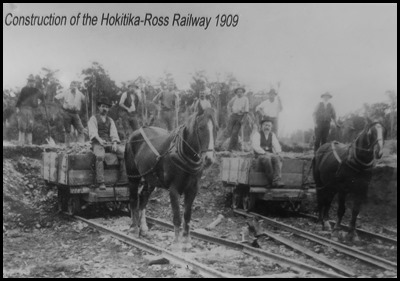 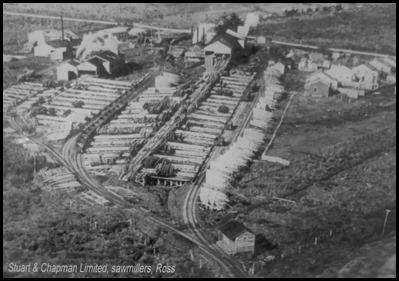 Timber milling
took over from goldmining in the early 1900’s. Assisted by the extension of the railway to Ross
in 1909 and the bridging of the Mikonui River in 1918, Ross grew to
become one of the largest producers of indigenous timber in the South Island. In
the mid-1920’s Stuart and
Chapman’s sawmill at Ross employed more than half the town’s male
workforce. Another major industry was limestone quarrying which began, in 1918,
the formation of the West Coast Farmer’s Co-operative Lime Producing Company
Limited – fancy being a receptionist saying that every time you pick up the
telephone........
We paid our respects at the War Memorials and on we went.
Our first ‘tulip’ tree in bloom.
ALL IN ALL A GOLDEN FIND AN HONOURABLE LITTLE TOWN |
